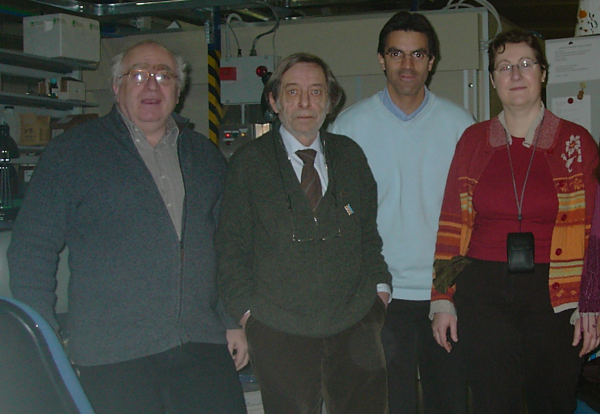Defender of the SOLEIL project since its beginnings and author of articles tracing its history [1], prof. Alain Michalowicz trained in X-ray absorption spectroscopy, collaborated with and helped by his software developments and his experience many of the scientists who today operate SOLEIL's EXAFS beamlines. His contribution to training users in his EXAFS analysis program chain, both in the past via the HERCULES schools and during SOLEIL's 16 years of operation (2007-2023), through his active participation in the Montpellier X-ray absorption spectroscopy initiation school, had a strong impact on the development of spectroscopy among a wide community of scientists, whether chemists, biologists or physicists. Touched by his death on June 29, 2024, we would like to briefly retrace his career.
Alain Michalowicz's academic career began in September 1974 as an assistant professor by joining the structural physico-chemistry laboratory at Paris 12 University in Créteil, then directed by Michel Renaud and Roger Fourme. Joining a team resolutely determined to move towards protein crystallography for which synchrotron radiation, then in full development at LURE (Laboratory for the Use of Electromagnetic Radiation, Orsay), offered all the promises, he actively contributed to the construction of the LURE D1 line associated with the Solid State Physics team of which Denis Raoux, Pierre Lagarde and Anne-Marie Flank were part of. Under the leadership of Roger Fourme, he turned to the study of metallo-proteins by X-ray absorption spectroscopy for which he installed the first X-ray fluorescence detector on the EXAFS 1 branch. His meeting with José Goulon, then a CNRS research fellow in Nancy and just back from SSRL at Stanford, was decisive in the development of EXAFS analysis tools for the scientific community, with a focus on easy accessibility for all and pedagogy: first the set EXAFS for the Mac and more recently MAX: Multiplatform Applications for XAFS. The methods and programs for analyzing X-ray absorption spectra, applied to the study of local order and crystalline disorder in inorganic materials, were at the heart of his state thesis, supervised by Michel Renaud and defended in 1990 at Paris 12.

De gauche à droite : Alain Michalowicz, Gilberto Vlaic, Jaques Moscovici et Karine Provost lors d'une session de mesures au synchrotron.
Author of more than 100 papers, Alain has focused on both EXAFS applications for materials and biomedical applications. The former includes the characterization of spin-transition complexes, electrochromic compounds and ferroelectric perovskites, while the latter includes cobalamin compounds, vitamin B12 derivatives and platinum-based anticancer complexes.
Alain has always been particularly interested in the complementarity between X-ray diffraction and X-ray absorption spectroscopy, with a marked taste for the statistical and methodological aspects, and a rigor, that have earned him international recognition. As a member of the IUCr XAFS commission from 1999 to 2008, he made a significant contribution in 2000 to the writing of the report on error handling in EXAFS analysis, which is still a reference today. From 2007 to 2023, he taught EXAFS error calculation at the Montpellier Recurrent School for Initiation into X-ray Absorption Spectroscopy. Towards the end of his career, he became interested in multivariate analysis of X-ray absorption spectra, to address the problem of species mixtures when monitoring chemical reactions. He then completed his program chain accordingly. Right up until the last few months, his concern was to ensure that his programs remained freely accessible to the entire scientific community.
We'll miss his enthusiasm, his ability to work, his incredible memory and his good humor.
[1] Alain Michalowicz, Henri Ostrowiecki, Isabelle Martelly et René Bimbot, « De Frascati à Soleil, histoire du rayonnement synchrotron (1963-2013) », Histoire de la recherche contemporaine, Tome III - N°1 | -1, 6-7.
